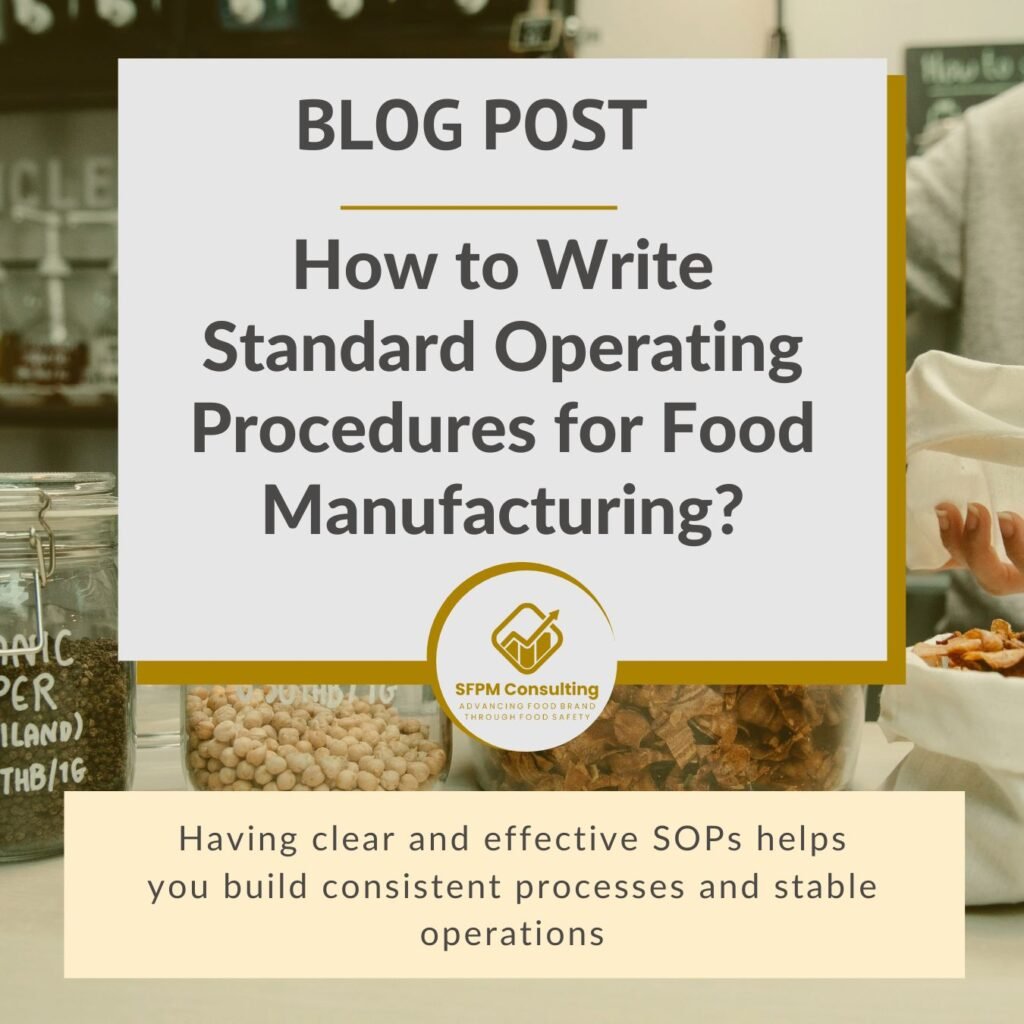Creating effective Standard Operating Procedures (SOPs) is essential for maintaining consistency and quality in food manufacturing. It provides clear instructions on performing tasks, ensuring that your team members follow the same process.
This improves your team’s efficiency and helps meet regulatory requirements and maintain high standards of food safety.
In this blog post, we will explore detailed tips for writing SOPs specifically tailored for the food manufacturing setting.
The Importance of SOPs in Food Manufacturing
Standard Operating Procedures (SOPs) are crucial in the food manufacturing industry. When you have good procedures and steps outlined that are the same as your implementation or practices, it ensures that every process, from ingredient handling to packaging, is performed consistently and safely.
It also helps minimize errors, improve efficiency, and ensure compliance with regulatory standards. By having well-written SOPs, you can maintain high-quality products and reduce the risk of contamination or other safety issues.
Identifying the Key Processes to Document
Before you start writing SOPs, it’s important to identify the key processes that require documentation. In a food manufacturing setting, these can include processes like raw material handling, equipment cleaning, production procedures, quality control checks, and packaging.
Prioritize the processes that directly impact product quality and safety. Focusing on these critical areas helps you ensure that your SOPs address the most important aspects of your operations. It is important to be able to document your processes as it helps guide our team in understanding what to do, especially in the absence of any key personnel.
Gathering Input from Experienced Team Members
Writing effective SOPs (especially for pre-existing procedures) requires input from experienced team members familiar with the processes. These individuals can provide valuable insights into the steps, potential challenges, and best practices. Conduct interviews or brainstorming sessions with employees who perform the tasks regularly. Their firsthand knowledge will help you create accurate and practical SOPs reflecting the workflow.
If it is a new SOP, ask your team members for input; they can provide insights into effective ways to meet the requirements. Never attempt to create a procedure without the user’s input.
Incorporating Safety and Compliance Guidelines
Safety and compliance are paramount in food manufacturing. Your SOPs should include guidelines for maintaining hygiene, handling hazardous materials, and complying with industry regulations.
Clearly outline the safety precautions that must be followed at each process step. Include references to relevant regulatory standards and ensure that your SOPs are regularly updated to reflect any changes in these standards.
Structuring Your SOPs for Clarity and Usability
The structure of your SOPs is crucial for ensuring clarity and usability. Start with a clear title and a brief introduction explaining the SOP’s purpose.
Use headings and subheadings to break down the procedure into manageable sections. Include step-by-step instructions, and use bullet points or numbered lists for easy reference. Visual aids like diagrams or flowcharts can also enhance understanding. Use simple and concise language to avoid confusion.
Consider checking out our SOP template to help you structure your SOP correctly. Check our SOP selections here
Implementing a Review and Approval Process
Once your SOPs are written, it’s important to implement a review and approval process. This ensures that the procedures are accurate and effective. Have the draft SOPs reviewed by supervisors or food safety professionals who are knowledgeable about the processes.
Conduct a trial run to identify any issues or areas for improvement. After making necessary revisions, obtain formal approval from the relevant authorities before finalizing the SOPs.
Remember to document the issuance date and any version changes.
Training Employees on New SOPs
Introducing new SOPs requires thorough training to ensure employees understand and follow the procedures. Conduct training sessions where you go over the SOPs in detail and provide hands-on demonstrations.
Encourage your employees to ask questions and provide feedback.
Regular training and refresher courses will help reinforce the importance of following SOPs and keep everyone up-to-date with any changes.
Monitoring and Updating SOPs Regularly
You don’t need to stick with your first draft. SOPs should be living documents that are regularly monitored and updated. You can schedule periodic reviews to assess the effectiveness of your procedures and make any necessary adjustments.
Encourage your employees to report any issues or suggestions for improvement. By keeping your SOPs current, you can ensure that they continue to meet the needs of your operations and comply with regulatory requirements.
Writing effective Standard Operating Procedures is essential for food operations and businesses to maintain consistency, quality, and safety. By understanding the importance of SOPs and following the tips in writing and implementing them, you can create comprehensive and practical procedures that enhance your operations. With well-written SOPs, you can achieve greater efficiency and ensure the highest standards of your food products.
If you need an SOP template, consider checking our Template selection for a faster and more efficient starter.
Our food safety experts can help you build food safety procedures from scratch within 4 weeks or less to meet the requirements for HACCP or SQF. If you are looking for expert guidance, book a time with us and let us help you with your program.

